



Article by Rosa Menkman
Based on an interview with the Critical Glitch Artware Category organizers and contenders of Blockparty and Notacon 2010: jonCates, James Connolly, Eric Oja Pellegrino, Jon.Satrom, Nick Briz, Jake Elliott, Mark Beasley, Tamas kemenczy and Melissa Barron.
From April 15-18th, the Critical Glitch Artware Category (CGAC) celebrated its fourth edition within the Blockparty demoparty and this time also as part of the art and technology conference Notacon.
The program of the CGAC consisted of a screening curated by Nick Briz, performances by Jon Satrom, James Connolly & Eric Pellegrino, and DJ sets by the BAD NEW FUTURE CREW. There were also a couple of artist presentations and the official presentation of a selection of the (115!) winners within the Blockparty official prize ceremony.
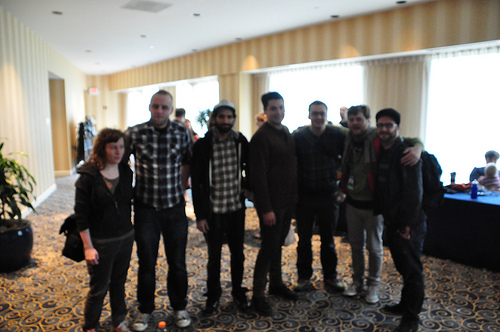
The fact that CGAC was coupled with a demoscene event is somewhat extraordinary. It is true that both the demoscene and CGAC or ‘glitchscene(s)’ focus on pushing boundaries of hardware and software, but that said, I (as an occasional contender within both scenes) could not think about two more parallel, yet conflicting worlds. The demoscene could be described as a ‘polymere’ culture (solid, low entropic and unmixable), whereas CGAC is more like an highly entropic gas-culture, moving fast and chaotically changing from form to form. When the two come together, it is like a cultural representation of a chemical emulsion; due to their different configuration-entropy, they just won’t (easily) mix.
But all substances are affected (oxidized) by the hands of time; there is always (a minimal) consequence at the margin. And this was not the first time these two cultures were exposed to each other either; Criticalartware had been present at Blockparty since 2007. Moreover, a culture can of course not be as strictly delineated as a chemical compound; it was thus clear that this year the two were reacting to each other.
While over the last couple of years the demoscene has been described in books, articles and thesis’, this particular kind of ‘fringe provocation’ is not what these researchers seem to focus on; they (exceptions apart) concentrate on the exclusivity of the scene and its basic or specific characteristics. The ‘assembly’ of these two cultures during Blockparty could therefore not only serve as a very special testing moment, but also widen and (re)contextualize the scope of the normally independent researches of these cultures. So what happened when the compounds of the chemicals were ‘mixed’ and what new insights do we get from this challenging alliance (if there is such a thing)?
The demoscene is often described as a bounded, delimitated and relatively conservative culture. Its artifacts are dispersed within well-defined, rarely challenged categories (for the contenders, there is the ‘wild card’ category). Moreover, the scene is a meritocracy – while the contenders (that refer to themselves with handles or pseudonyms) within the scene have roles and work in groups, the elite is ‘chosen’ by its aptitude.
The demoscene also serves a very specific aesthetics, as enumerated by Antti Silvast and Markku Reunanen this week on Rhizome (synced music and visuals, scrolling texts, 3d objects reflections, shiny materials, effects that move towards the viewer – tunnels and zooming – overlays of images and text, photo realistic drawing and adoption of popular culture are the norm). In the same article Silvast and Reunanen declare that: ‘Interestingly, even though we’re talking about technologically proficient young people, the demosceners are not among the first adopters of new platforms, as illustrated by numerous heated diskmag and online discussions. At first there is usually strong opposition against new platforms. One of the most popular arguments is that better computers make it too easy for anybody to create audiovisually impressive productions. Despite the first reactions, the demoscene eventually follows the mainstream of computing and adopts its ways after a transitional period of years.'[1]
More about this can be read at Rhizome’s week long coverage of the demoscene. Silvast and Reunanen’s statement might be most interesting when we move along to see what happened during the meeting of the two scenes.
Co-founded by jonCates, Blithe Riley, Jon Satrom, Ben Syverson and Christian Ryan in 2002, Criticalartware is a radically inclusive group that started as a media art history research and development lab. Since 2002 the group has shifted and transitioned. Criticalartware’s formation was deeply influenced by the Radical Software platform (publications and projects). Since then it has been an open platform for critical thinking about the use of technology in various cultures. Criticalartware applies media art histories to current technologies via Dirty New Media or digitalPunk approaches. Through tactics of interleaving and hyper threading it permeates into cultural categories of Software Studies, Glitch Art, Noise and New Media Art.
During the first phase of Criticalartware (from 2002 – 2007), the group was a collaborative of artist-programmers/hackers. It also functioned as a media art histories research and development lab. In this form, Criticalartware had become an internationally recognized and reviewed project and platform.
When this phase ended in 2007, jonCates, Tamas Kemenczy and Jake Elliott were the remaining active members of Criticalartware. During this time, Elliott and Kemenczy wanted to take the project in a new direction; into the demoscene. This direction has ultimately defined the second phase of Criticalartware; an artware demo crew, making work for and appearing annually at the Blockparty event and Notacon conference in Cleveland.
2010 marked the next important transition for the Criticalartware crew, when it started using the phrase ‘Critical Glitch Artware’- Category. Criticalartware now not only organizes itself around the demoscene but also around the concept of the glitch. While a glitch (not to be confused with glitch art) appears as an accident or the result of misencoding between different actors, CA’s Glitch-art category exploits this possibility in an metaphorical way. Criticalartware is now foregrounding these glitch art works (with an emphasis on the procedural/software works) that have been on a ‘pivotal axis’ of the crew for a long time.
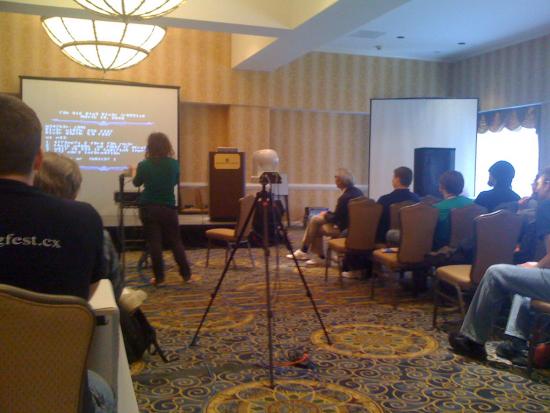
CGA, just like the demoscene, can be described as an open (plat)form for artistic activity/culture/way of life/counter culture/multimedia hacker culture and (unfortunately a bit of ) a gendered community. CA are about pointing out ideas or concepts within popular culture and incorporating (standardizing) these as machines or programs in a reflexive and critical self-aware manner.
CA can also be described as an investigating of standard structures and systems. They are often amongst early adopters of technology, in which they (politically) challenge and subvert categories, genres, interfaces and expectations. But the CGA – artists do not feel stuck in a particular technology, which makes it aesthetically, at least at first sight hard to pinpoint a common denominator.
There is not a real organization within this scene. The artists and theorists are scattered over the world, connected in fluid/loosely tied networks dispersed over many different platforms (Flickr, Vimeo, Yahoo groups, Youtube, NING, Blogger and Delicious).
Because of its bounded, intricate conservative qualities, the demoscene has been an easy target for outsiders to play ‘popular’ ironic pranks on, to misunderstand or misrepresent. A growing interest for the demoscene by outsiders has compelled jonCates and the Criticalartware crew to articulate their position towards the demoscene more extensively. In an interview with me, jonCates articulates Criticalartware’s points and contrasts these with problematic representations of the demoscene within two works by the BEIGE Collective (that in 2002 existed along side the Criticalartware crew in Chicago).
When the BEIGE collective went to the HOPE (Hackers on Planet Earth) Conference in 2002 they made a project called: TEMP IS #173083.844NUTS ON YOUR NECK or Hacker Fashion: A Photo Essay by Paul B.Davis + Cory Arcangel.
jonCates writes to me that ‘this problematic project characterizes or epitomizes a kind of artists as interlopers positionality that i + Criticalartware as a crew has always attempted to complicate. we do not want or understand ourselves as seeking out an ironic or sarcastically oppositional position in relation to the contexts that we choose to work in. we have not set out to ridicule the demoscene or otherwise make ridiculous our relations to the demoscene. in contrast, we set out to operate within a specific demoscene through multi-valiant forms of criticality, playfullness, enthusiasm, respect, interest, admiration, etc… this has also been in efforts to connect this specific demoscene to our experimental Noise & New Media Art scenes or what you Rosa referred to earlier as glitchscene…’
Another point of contention for jonCates is the Low Level All-Stars project by BEIGE (in this case, Cory Arcangel) + Radical Software Group (Alexander R. Galloway). this work is described as ‘Video Graffiti from the Commodore 64 Computer’ (2003) by Electronic Arts Intermix who sells/distributes this work as a video in the context of Video Art.
Low Level All-Stars has been shown at Deitch Projects in NYC in 2005 and circulated in the contemporary art world. jonCates writes to me saying the work seeks ‘to isolate + thereby establish cultural values for this ‘quasi-anthropological’ view of demos as found object + functioning as a tasteful ‘testament to a lost subculture.’ It is now being offered online as an educational purchase for $35 dollars.
However, as jonCates and Criticalartware work in the demoscene demonstrates, the demoscene subculture is not lost, nor over. jonCates moves on by writing that ‘the demoscene is a vibrant whirld wit a dynamic set of pasts + presents. this is another of which many (art) whirlds are possible. we seek to make those whirlds known to each others + ourselves out of respect, curiosity, investment, inclusiveness, criticality, playfullness, etc…’
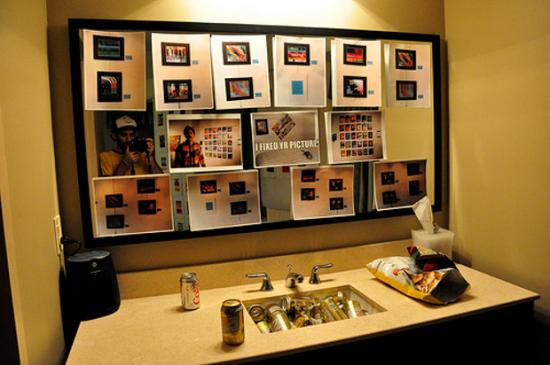
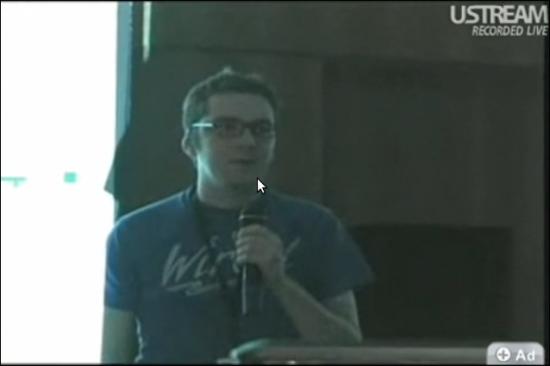
The Criticalartware crew has been taking part in Blockparty since 2007, when it won the last place in a demo competition and was disqualified. One year later, in 2008, through a number of efforts (including Jake Elliott’s presentation Dirty New Media: Art, Activism and Computer Counter Cultures at HOPE, the Hackers on Planet Earth conference in NYC in 2008). CA was able to mobilize and manifest the concept of the Artware category at Blockparty, a category which Blockparty itself retroactively recognized CA for winning.
In the same year (2009) CA organized a talk at Blockparty in which they revealed the “secret source codes” of the tool they used to develop the winning artware of the year before.
By 2010 CA wanted to expand the concept of Artware within the demoscene, which lead to the development of the ‘Critical Glitch Artware Category’ event. Within the CGAC Compo there where 115 subcategory winners, which showed some kind of glitch-critique towards systematic categorization of Artware. Jason Scott (the organizer of Blockparty) personally invited CGAC to pick 3 winners and present their wares at the official Blockparty prize ceremony. Besides these three winners, CGACs efforts got extra credits when Jon Satrom’s Velocanim_RBW also won the Wild card category compo.
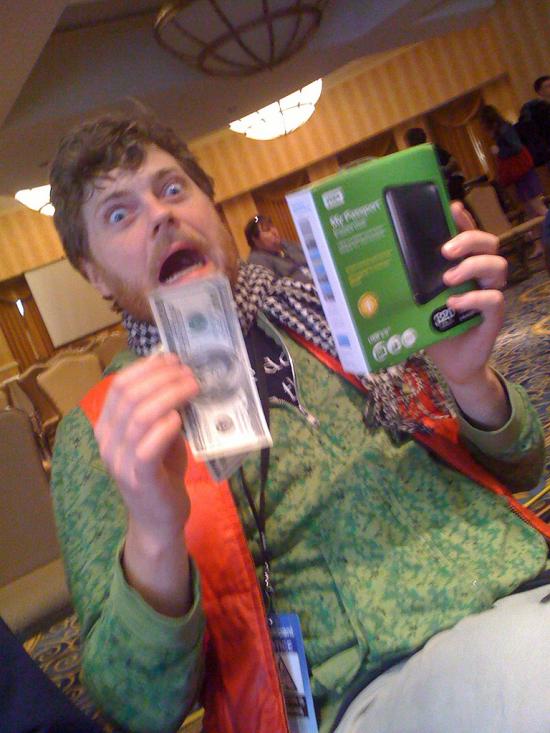
Therefore, not only did CA intentionally open up the Blockparty event to outsiders of the demoscene, it also provided a place for new media art and the glitchscene within the demoscene and got Blockparty to accept and invite the CA within their program. Thus, the outsiders (CA) moved towards the inside of the event, while the insiders got introduced to what happens outside of the demoscene (event), which led to conversations and insights into for instance bug collecting, curating and coding.
The Critical Glitch Artware Category has been accepted by, at least, the fringe of Blockparty 2010. Even though the category itself is not (yet) visible on the website, Satrom’s winning work Velocanim_RBW is. Moreover, CGAC was part of the official prize ceremony, streamed live on Ustream, the live Blockparty internet television stream. So how does CGAC redefine or reorganize the fringe between them and the demoscene and how does the demoscene redefine and reorganize the structure of CGAC?
For now, I think crystallized research into the aesthetics of the demoscene can also help describe the aesthetics within CGAC. Custom elements like rasters, grids, blocks, points, vectors, discoloration, fragmentation (or linearity), complexity and interlacing are all visually aesthetic results of formal file structures. However, the aesthetics of CGA do not limit themselves, nor should they be demarcated by just these formal characteristics of the exploited media technology.
Reading more about the demoscene aesthetics, I ran into a text written by Viznut, a theorist within the demoscene (who also wrote about ‘thinking outside of the box within the demoscene’). He separates two aesthetic practices within the scene: optimalism (an ‘oldschool’ attitude) which aims at pushing the boundaries in order to fit in ‘as much beauty as possible’ in as little code necessary, and reductivism (or ‘newschool’ attitude), which “idealizes the low complexity itself as a source of beauty.'[2]
He writes that “The reductivist approach does not lead to a similar pushing of boundaries as optimalism, and in many cases, strict boundaries aren’t even introduced. Regardless, a kind of pushing is possible — by exploring ever-simpler structures and their expressive power — but most reductivists don’t seem to be interested in this aspect”.
A slightly similar construction could be used for aesthetics within Glitch Art. Within the realm of glitch art we can separate works that (similar to optimalism) aim at pushing boundaries (not in terms of minimal quantity of code, but as a subversive, political way, or what I call Critical Media Aesthetics; aesthetics that criticize and bring the medium in a critical state) and minimalism (glitch works that just focus on the -low- complexity itself – that use supervisual aesthetics as a source of beauty). The latter approach seems to end in designed imperfections and the (popularized) use of glitch as a commodity or filter.[3]
Of course these two oppositions exist in reality on a more sliding scale. Debatebly and over simplified I would like to propose this scale as the Jodi – Mille Plateaux (old version) – Beflix – Alva Noto – Glitch Mob – Kanye West/Americas Next Top Model Credits continuum; A continuum that moves from procedural/conceptual glitch art following a critical media aesthetics to the aesthetics of designed or filter based imperfections.
This kind of continuum forces us to ask questions about the relationships between various formalisms, conceptual process-based approaches, dematerializations and materialist approaches, Software Studies, Glitch Studies and Criticalartware, that could also be of interest or help to future research into the demoscene. When I ask jonCates what other questions CGAC brings to the surface, he answers:
“when i asked Satrom to participate in the CRITICAL GLITCH ARTWARE CATEGORY event + explained the concept that Jake + i had developed to him he was immediately interested in talking about it as form of hacking a hacker conference, by creating a backdoor into the conference/demoscene/party/event. im also excited about this way of discussion the event + our reasonings + intentions, but i want to underscore that this effort is also undertaken out of respect for everyone involved, those from the demoscene, glitchscenes, hackers, computer enthusiasts, experimental New Media Artists, archivists, those who are working to preserve computer culture, Noise Artists + Musicians, etc… so while this may be a kind cultural hack/crack it is not done maliciously. we are playful in our approach (i.e. the pranksterism that Nick refers) but we are not merely court jesters in the kingdom of BLOCKPARTY. we have now, as of 2010, achieved complete integration into the event without ever asking for permission. perhaps that is digitalPunk. + mayhaps that is a reason for making so many categories +/or so many WINNERS! 🙂
…also, opening the category as we did (with a call for works [although under a very short deadline], an invitational in the form of spam-styled personal/New Media Art whirlds contacts + mass promotional email announcements of WINNERS! (in the style of the largest-scale international New Media Art festivals such as Ars Electronica, transmediale, etc…) opens a set of questions about inclusion.
…whois included? who self-selects? whois in glitchscenes? are Glitch Artists in the demoscene? etc… this opening also renders a view on a possible whirld, which was an important part of my intent in my selection of those who won the invitational aspect of the CRITICAL GLITCH ARTWARE CATEGORY. by drawing together (virtually, online + in person) these ppl, we render a whirld in which an international glitchscene exists, momentarily inside a demoscene, a specific timeplace + context.”
Lately the demoscene seems to get more and more attention from “outsiders”. Not only ‘pranksters’, artists and designers who are interested in an “old skool” aesthetic, but also researchers and developers that genuinely feel a connection or interest to a demoscene culture (I use ‘a’ because I think there still should be a debate about if there might be different demoscene cultures).
This development makes it possible to research a subculture normally described as ‘closed/bounded’ and to see where and how these different cultures are delineated. The tension between Blockparty/Notacon and Critical Glitch Artware Category is one that takes place on a fringe. They do not come together, but while it would be easy to just think that probably the CGAC sceners were just ignored (and maybe flamed) by the demosceners half of the time, some more interesting and important developments and insights also took place.
The CGAC-crew has over the years shown itself to be volatile, critical and unexpected, but it has also shown respect to the traditions of the demoscene and in doing so, earned a place within this culture (at least at Blockparty). This gave the CGAC-democrew not only the opportunity to put a foot in the backdoor of a normally closed system, but also to give some more insights into what they expose best: they confronted the contenders with their (self-imposed) structures and introduced them to (yet to be understood and accepted) new possibilities.
So what happens when a polymere is confronted with entropic gasses? I think the chemical compounds get the opportunity to measure the entropic elasticity of their dogmatic chains.
Also read:
Carlsson, Anders. Passionately fucking the scene: Skrju.
http://chipflip.wordpress.com/2010/05/20/passionately-fucking-the-scene-skrju/ Chipflip. May 20th, 2010.